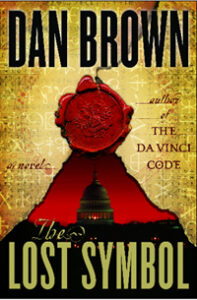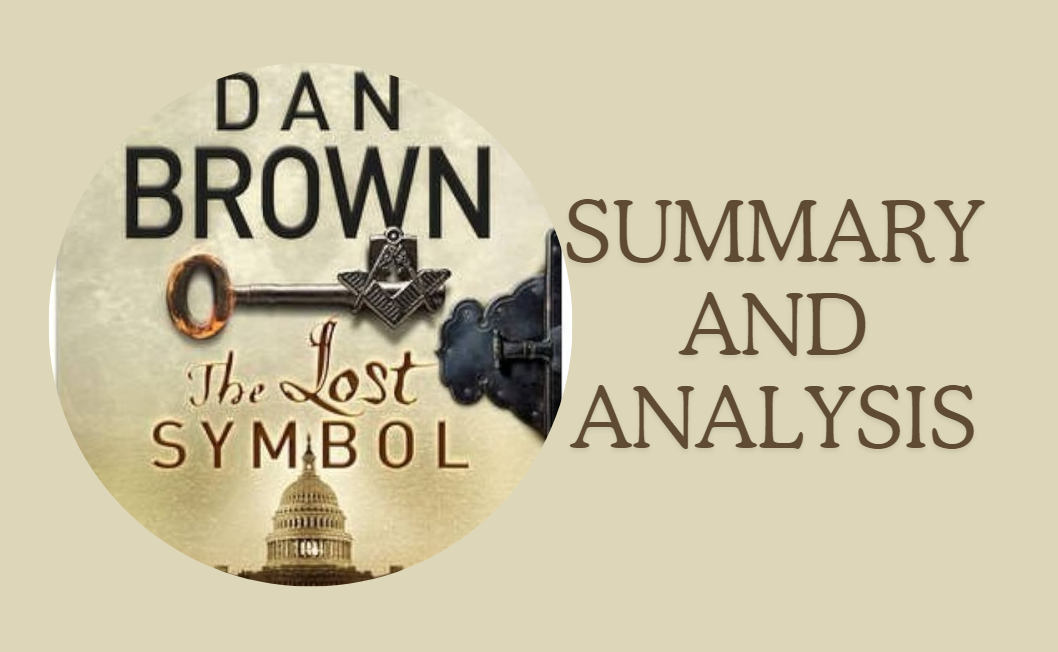“The Lost Symbol” is a thriller novel by Dan Brown and the third book in the Robert Langdon series. The story is set in Washington, D.C., and follows Harvard symbologist Robert Langdon as he tries to save his mentor, Peter Solomon, from a mysterious kidnapper who wants to uncover an ancient secret. The novel explores themes of esoteric wisdom, Freemasonry, and the power of the human mind.
An In-depth Look into Character’s List Of The Lost Symbol By Dan Brown
- Robert Langdon: Robert Langdon is the main character of the novel. He is a Harvard professor of art history and the fictional field of symbology. Langdon is a highly intelligent man who relies on his wits rather than his brawn. He has appeared in five novels written by Dan Brown. In this novel, Langdon’s involvement in the mystery is more circumstantial. Langdon is drawn into the situation because he happens to be the person Peter Solomon trusted to safeguard a sealed package that his family had been protecting for generations.
- Katherine Solomon: Katherine Solomon is a brilliant scientist foraying into the untapped field of Noetic Science. She joins Langdon halfway through the novel, as his deuteragonist, after he saves her life, and helps him solve the clues to find her brother before it’s too late.
- Peter Solomon: Peter Solomon is a member of the fraternal society known as the 33rd-degree Masons, which traces its origins to the craft of masonry. He was also a Smithsonian secretary, billionaire philanthropist, Freemason, father of Zachary Solomon, and close friend of Robert Langdon. He was the person who trusted Langdon to safeguard a sealed package that his family had been protecting for generations.
- Mal’akh (Zachary Solomon): Mal’akh, formerly known as Zachary Solomon, is the son of Peter Solomon and the main antagonist of the novel. He seeks to steal a Masonic pyramid that his father owns. Mal’akh believes that practicing black magic allowed the angel Moloch to enter his body. He significantly altered his appearance during his time in prison before the events in the book.
- Inoue Sato: Inoue Sato is the director of the CIA’s Office of Security. She claims that Mal’akh poses a threat to the national security of the U.S. She insists that capturing him is more important than rescuing Peter, but won’t say why.
- Warren Bellamy: Warren Bellamy is the Architect of the Capitol and a high-ranking Freemason. Warren Bellamy, the architect of the Capitol, was always available to assist the characters. He was smart where his job was concerned, having aided the heroes in matters they needed.
- Isabel Solomon: Isabel Solomon is the mother of Peter and Katherine Solomon and the grandmother of Zachary Solomon.
- Trish Dunne: Trish Dunne is Katherine’s metasystems analyst or computer number cruncher.
Analysis Of The Plots in the Lost Symbol
“The Lost Symbol” begins with Harvard symbologist Robert Langdon receiving a phone call from a man claiming to be the executive assistant of his friend and mentor, Peter Solomon. The assistant requests that Langdon fly to Washington, D.C., and give the keynote speech at a donor’s party that is taking place later that night. Langdon agrees to deliver the speech and brings with him a small, enigmatic package that Peter had entrusted to him years earlier.
The Unexpected Turning of Events:
However, when Langdon arrives at the Capitol Building where the party is supposedly taking place, there is no party. Langdon receives a phone call from the man who claims to be Peter’s executive assistant. This man claims to be holding Peter captive and says he needs Langdon to find an underground portal protected by the Masons.
In Light of The Discovery:
While Langdon is speaking to this man, visitors to the Capitol stumble upon a dismembered hand in the Rotunda. Langdon instantly recognizes the ring on the hand as Peter’s. A combination of alphanumeric characters has been permanently marked on the person’s hand in the form of a tattoo.
The Investigation Goes On:
Langdon meets with Inoue Sato, who is the head of the CIA’s Office of Security. Sato claims that Mal’akh’s capture is more important than Peter’s rescue, citing national security concerns, but refuses to provide details.
The Clues and Revelations Found:
Upon examining Solomon’s hand, the team discovers a clue leading them to his Masonic altar located in a room in the Capitol’s sub-basement. There, they find a small pyramid without a capstone, with an inscription carved into it. Sato confronts Langdon with the x-ray of his bag taken at the Capitol, revealing a smaller pyramid in the package Langdon brought in response to the kidnapper’s request to pose as Solomon’s assistant.
The Conclusion Of Symbol:
Langdon was unaware of the contents, but Sato attempted to arrest him for it. The story then unfolds with numerous twists and turns as Langdon tries to solve the mystery and save his friend.
Deep-seated Themes And Into Their Depth
The novel “The Lost Symbol” explores various deep-seated themes.
The Untapped Potential of the Mind
The novel underscores the immense potential of the human mind. It suggests that through practices like meditation or visualization, we can unlock this latent potential. This theme is intricately woven with the concept of Noetic Science, a significant element in the book.
Freemasonry’s Rich Legacy
Freemasonry plays a pivotal role in “The Lost Symbol”. The book delves into the rich tapestry of Freemasonry’s history, rituals, and symbols, portraying it as a custodian of ancient wisdom. The protagonist, Robert Langdon, deciphers Masonic symbols and rituals to unravel the mystery at the heart of the narrative.
The Confluence of Science and Spirituality
The thriller novel explores the confluence of science and spirituality, suggesting that these two domains, often perceived as opposing forces, are complementary and can collectively uncover profound truths about the universe.
The Pursuit of Knowledge
“The Lost Symbol” is a book that emphasizes the importance of seeking knowledge. The characters are driven by their quest to uncover hidden truths and solve enigmas. This pursuit propels them on an exhilarating adventure through Washington, D.C., unveiling secrets concealed in the city’s landmarks and monuments.
Writer’s Thoughts On The Lost Symbol
Dan Brown, the writer of “The Lost Symbol”, has shared that the novel is a blend of scientific facts and mystical elements. He holds the view that there exists a concealed world beyond the one we perceive. The term “Symbol” in the title, according to him, is symbolic and allegorical, and he asserts that the existence of a hidden symbol somewhere in the US Capital is not fictional.

He has also stated, “There is a hidden world behind the one we all see. For all of us.”, indicating his belief in the potency of symbols to unveil concealed truths about our world. He has also quoted from the book: “He thought about science, about faith, about man. Every culture throughout history has shared a common experience.
We all had the Creator. We may have used different names, faces, and prayers, but God remained a universal constant for humanity.
Reviews From The Community
“The Lost Symbol” has received a variety of reviews from readers and critics alike. Some readers find the book to be a masterstroke of storytelling, praising its original plot and the heart-stopping pace of the ending. However, others find parts of the book to be monotonous and slow, and criticize it for being contrived and full of coincidences.
The Hollywood Reporter notes that the series settles into a polished, decently acted rhythm that follows the plotting of a Dan Brown novel. However, it also mentions that the series never finds an enjoyable way to interpret Brown’s trademark reliance on a main character whose superpower is mansplaining.
A review on Goodreads mentions that “The Lost Symbol” is a brilliant tapestry of veiled histories, arcane symbols, and enigmatic codes. It also notes that Dan Brown’s novels are intricately woven stories that reveal hidden histories, mysterious symbols, and cryptic codes.
On the other hand, The Guardian criticizes the writing as being mostly bad in an uninspired way. Dane Cobain suggests that “The Lost Symbol” is worth reading if you’ve read the other books in the series, but it’s not the best book to start with.
A few Words To End This Review
In conclusion, “The Lost Symbol” by Dan Brown is a thrilling novel that weaves together elements of mystery, history, art, and religion. The book’s intricate plot, compelling characters, and exploration of thought-provoking themes have captivated readers worldwide. Despite receiving mixed reviews, the novel’s original storyline and heart-stopping pace have contributed to its popularity.
The exploration of Freemasonry and the power of the human mind provide a fascinating backdrop to the narrative. Whether you’re a fan of Dan Brown’s previous works or new to his writing, “The Lost Symbol” offers an engaging read that will keep you turning the pages.

